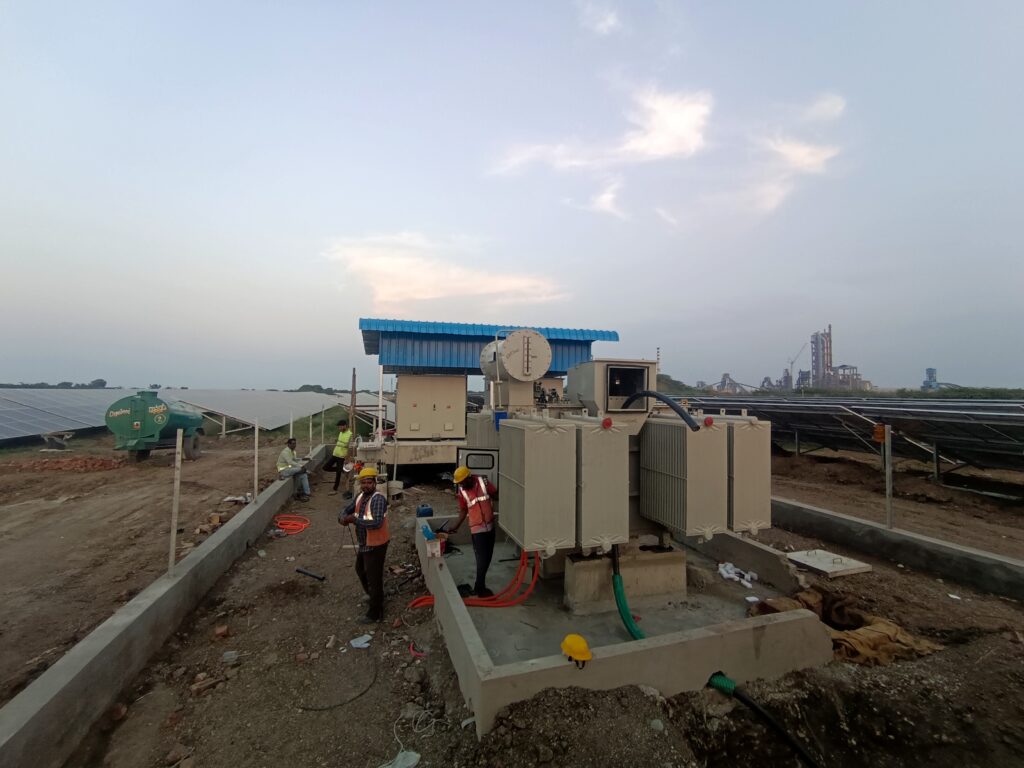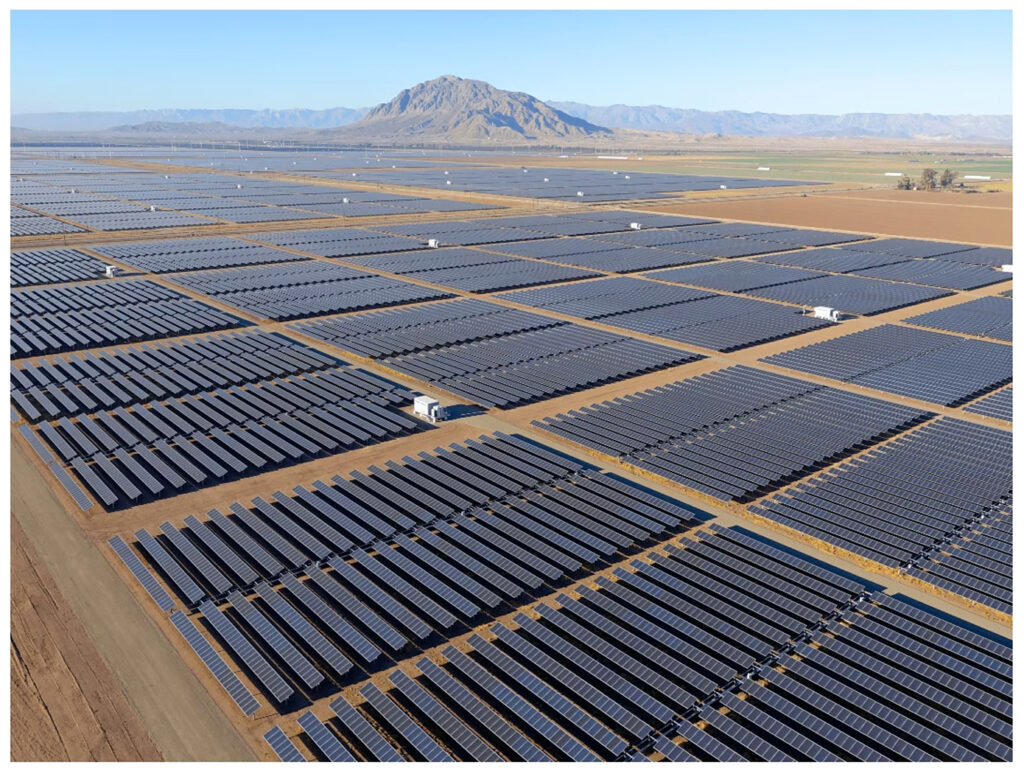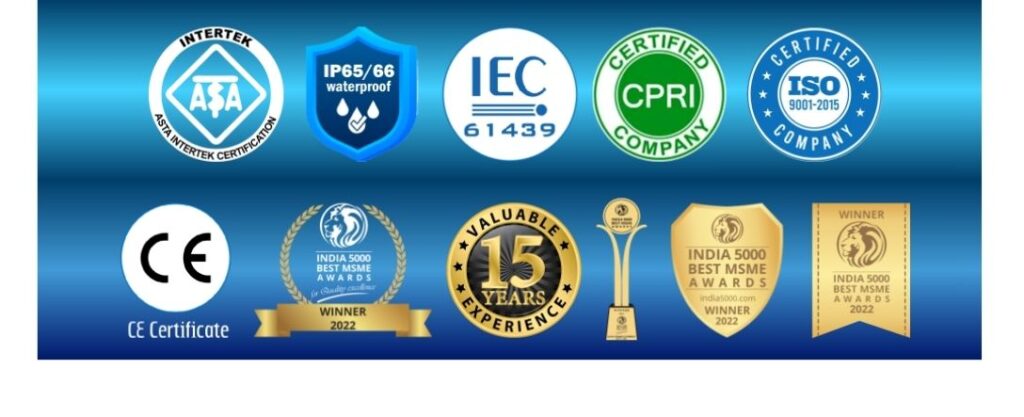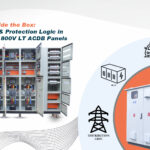As solar technology evolves to deliver higher efficiency and lower cost per watt, the electrical backbone of MW-scale solar projects is undergoing a quiet revolution. One of the key enablers of this transformation is the adoption of 800V LT panels, purpose-built to handle the rising demands of 1500V DC string inverter architectures. In this blog, we’ll decode what 800V LT panels are, explore their relevance in today’s utility-scale solar landscape, and walk through the engineering that makes them indispensable for EPCs and developers aiming for reliability, compliance, and long-term ROI.
800V LT panels, or low-voltage switchgear assemblies rated for 800V AC, are critical components in solar power distribution. These panels consolidate the output from multiple string inverters, safely channel power to transformers, and enable fault management and remote monitoring—all while operating under elevated voltage conditions.
Accu-Panels’ 800V LT ACDB panels are engineered to support the next generation of MW-scale solar infrastructure. With increasing adoption of 1500V DC string inverter systems, these panels offer unmatched reliability, safety, and scalability—all tested and proven through CPRI certifications and IEC 61439 compliance.
Rated for Modern Solar Architecture
- Voltage Rating: 800V AC, 50Hz, 3-wire system
- System Compatibility: Optimized for MW-scale solar with string inverter output
- Application Use: AC power collection, fault isolation, energy metering, and SCADA monitoring
Rugged Mechanical Design
- Enclosure Material: CRCA steel – 2mm (frame), 1.6mm (partitions), 3mm load-bearing supports
- Ingress Protection: IP52 for indoor, IP55/IP65 with SCADA for outdoor installations
- Height Compliance: ≤2400mm overall; top switch ≤1750mm from floor
- Gland Plate: 5mm aluminium/stainless steel, undrilled & gasketed for modularity
- Base Frame: Robust 75/100mm structural steel channels
- Finish & Paint: RAL7035 shade, C5-grade anti-corrosion coating via 9-tank process
Busbar Engineering
- Material Options: Copper (1.2 A/sqmm) or Aluminium (0.6 A/sqmm)
- Design Considerations: Thermal stress, fault withstand, and energy efficiency
- Insulation & Sleeving: Heat-resistant and color-coded for phase identification
Switchgear & Protection Ecosystem
Major Components:
- MCCBs/ACBs: Up to 85kA fault withstand, electronic trip units (LSIG curves programmable)
- Surge Protection: Type 2 SPDs rated for 800V AC
- Earth Fault Protection: Integrated relays with leakage detection
- Voltage Control: Under/overvoltage trip logic
- Arc Fault Safety: Arc-resistant design or internal detection systems
- Phase Failure & Unbalance: Relay-based protection against imbalance conditions
- Reverse Power Block: Essential in grid-tied solar exports
- Remote Monitoring: RS-485 enabled MFMs and trip feedback integration
- SCADA Ready: All metering and relays interfaced for real-time fault diagnostics
Metering, Control & Safety Features
- Digital MFMs: Class 0.2s accuracy, RS-485 output
- CT/PT Units: Designed for accurate burden performance and heat dissipation
- LOTO Compliance: ON/OFF + Trip lamps for all feeders
- Thermal Management: Panel heaters and thermostats for moisture control
- Mechanical Layout: Mimic diagrams, labeling, and accessibility built to IS/IEC standards
Factory Acceptance Testing (FAT)
Before dispatch, every panel undergoes:
- HV Test: 2kV for 1 minute
- Insulation Resistance: >10 MΩ
- Wiring & Ferrule Verification
- Function Testing: Relays, breakers, SCADA links
- Visual & Mechanical Conformity
IEC Type Tests & Certifications
All 800V LT ACDB Panels meet IEC 61439 and CPRI benchmarks:
- Temperature rise and dielectric strength
- Short-circuit withstand (thermal + mechanical)
- Clearance and creepage distances
- IP tests (dust/water ingress protection)
- Flame resistance (glow wire test)
 C5 Coating: Corrosion Protection Built for Solar Parks
C5 Coating: Corrosion Protection Built for Solar Parks
- ISO Classification: C5 per ISO 12944
- Purpose: High-grade resistance to humidity, salt spray, industrial pollution
- Benefits:
- Long-term durability (25+ years design life)
- Prevents insulation failures
- Ensures branding aesthetics remain intact
- Enhances success rate during type testing
Why Accu-Panels’ 800V Solutions Set the Benchmark
- CPRI-Tested – For fault withstand, dielectric strength, and mechanical performance
- Field-Proven – Deployed across solar EPCs like Onix Renewable and Torrent Power
- Scalable – Compatible with hybrid systems: BESS, EV charging, grid export
- Customizable – Tailored to EPC/client specs with complete documentation
- Team-Driven – Supported by expert engineers, QAP inspectors, and OEM-certified technicians


Conclusion
In today’s solar landscape, choosing the right ACDB isn’t just about voltage—it’s about durability, intelligence, compliance, and confidence. Accu-Panels’ 800V LT panels are not only built for MW-scale solar, they’re designed for decades of safe operation, grid compatibility, and technical excellence.
If you’re an EPC, solar developer, or consultant seeking panels that combine engineering integrity with commercial performance, it’s time to plug into Accu-Panels’ solutions.
Authored By
Ghanshyam Soni Managing Director – Accu-Panels Energy Pvt. Ltd. Ahmedabad, Gujarat, India


 C5 Coating: Corrosion Protection Built for Solar Parks
C5 Coating: Corrosion Protection Built for Solar Parks








Solar Expert
What is LT Panel in Solar Power Plant ?
What are the Component of Solar LT Panel ?
How Does LT Panel Works ?
What is the Maximum Voltage on LT Panel ?
Ghanshyam Soni
An LT (Low Tension) panel is an electrical distribution board that receives AC power from solar inverters and distributes it to transformers or loads. It plays a key role in managing power flow, ensuring safety, and enabling monitoring in solar installations
LT panels typically include:
Circuit breakers (ACBs, MCCBs)
Busbars (copper or aluminium)
Protection relays (over/under voltage, earth fault, reverse power)
Measuring meters (digital MFMs, voltmeters, ammeters)
Indicators and selector switches
Surge protection devices
SCADA-ready monitoring units
LT panels draw power from transformers or generators and distribute it across various feeders and devices. They operate at voltages up to 440V and include protective mechanisms to isolate faults, monitor performance, and ensure safe operation
Standard LT panels operate up to 415V AC, but modern solar LT panels—like Accu-Panels’—can handle up to 800V AC, especially in systems using 1500V DC string inverters
LT Panel in Solar Plant – Quick Overview An LT (Low Tension) panel is the heart of AC power distribution in a solar plant, receiving inverter output and channeling it safely to the grid or load. It houses vital components like breakers, busbars, meters, and protective relays to control, monitor, and safeguard operations—typically handling up to 415V, with modern variants reaching 800V in high-capacity setups.